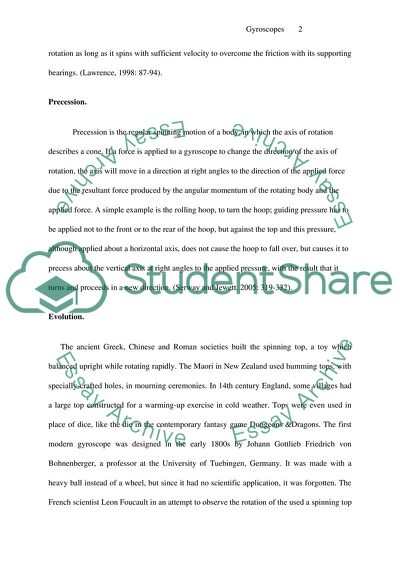Gyroscopes in Physics Report Example | Topics and Well Written Essays - 1500 words. https://studentshare.org/physics/1704596-gyroscopes-in-physics
Gyroscopes in Physics Report Example | Topics and Well Written Essays - 1500 Words. https://studentshare.org/physics/1704596-gyroscopes-in-physics.


